On February 14th, a heavily armed 19-year-old named Nikolas Cruz walked into Marjory Stoneman Douglas High School in Parkland, Florida and massacred 17 people. His primary weapon was an AR-15 semiautomatic rifle. Seventeen more innocent young victims added to a disgustingly long list of school shootings that have happened in America. I have spent a lot of time teaching at secondary and college level in the last 18 years, and fortunately, I have not been present at any incident that involved gun violence at a school. But I came pretty close to Columbine.
Let me talk about Columbine: I was not at Columbine High School on the morning of April 20, 1999 when Dylan Klebold and Eric Harris went on their shooting rampage. However, I was there for a job interview with Jefferson County Public Schools on the afternoon of April 19, and I returned as a photographer the morning of April 21 to cover the aftermath. At the time, I was a new father and just starting to consider teaching. I had begun applying for a few jobs at secondary schools (public and private) in and around Denver. Jefferson County Public Schools was the first interview I got, and I drove out to Littleton on a cold Monday afternoon to interview at Columbine.
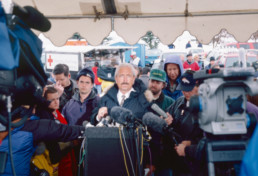
The interview was exactly what one would expect. I waited at the office for about 20 minutes until I was met and taken into a small conference room where two people interviewed me for about 45 minutes. When the interview was over, they gave me a short tour that included the cafeteria and library. About an hour and twenty minutes after I had arrived, I was getting back in my car and driving out of the parking lot. The school day was just ending and students were getting on busses and making their way to cars in the parking lot.
That was the end of the last normal day at Columbine High School.
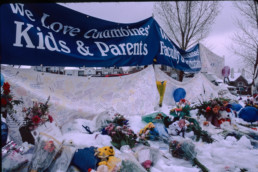
The next morning (April 20) I had an early gig assisting for a commercial photographer and I was up and out before sunrise. I got home in the early afternoon, which is when I turned on the TV and saw the news.
The morning of April 21, I left the house early with my camera bag and headed back to Littleton.
What I remember feeling when I arrived back at Columbine was total shock. The change that had taken place at that school between Monday afternoon (April 19) and Wednesday morning was unfathomable. Where students had been playing and throwing lacrosse balls back and forth on the snow-covered grass outside the school on Monday, an army of TV news trucks, police, fire, state, local and federal investigators had set up a sprawling camp. On the outskirts of the campus, people were beginning to set up makeshift memorials where piles of sympathy notes, cards, flowers, candles and other items were beginning to accumulate.
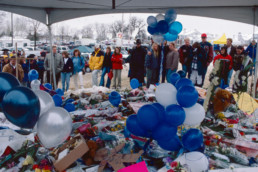
In a span of about 50 minutes on Tuesday morning (between 11:19am when the shooting started to 12:08pm when Harris and Klebold took their own lives), Columbine High School had gone from a normal American high school to a scene of mass murder. When the two perpetrators took their own lives and the gunshots and explosions ended, the scene quickly became one of the largest gatherings of media I’ve ever witnessed (this includes an OJ Trial verdict at the Santa Moncia Courthouse which before Columbine was the biggest media frenzy I’d ever experienced.) By Wednesday morning, not only had all the major US news networks set up shop, with Katie Couric and many other national news personalities on the scene, but the international press was arriving in droves as well. Within 24 hours of the shooting, a person on the scene could hear the constant hum of generators in the parking lot powering lights, cameras, and video transmission systems. There were hundreds of reporters on hand, most standing around talking to one another and waiting for press briefings.

Two thoughts occupied my mind that morning:
- Harris and Klebold killed 12 students and one teacher and injured 21 others.
- Bad news sells.
The photos I took that morning (7 rolls of 36 exposure slide film and 4 rolls of black and white negative) went to a lab that day for processing. I picked the film up the following morning, and spent a few hours looking at the shots. While I looked at my images, I listened to the news and remember feeling increasingly disgusted at how much news coverage the event was getting but how little conversation and action there was about preventing future killings.
I put all my photos from that day into a box where they have remained, until this post, unpublished.
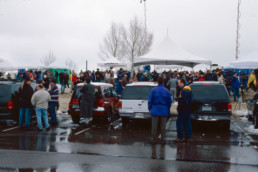
Now almost twenty years later, we’ve seen literally hundreds of school shootings, and the response has generally been the same. Events like this drive the news cycle, but nothing is done to address the problem. In fact, I would argue that because the news cycle thrives on negativity, it has only served to polarize people and make concensus on gun control impossible.
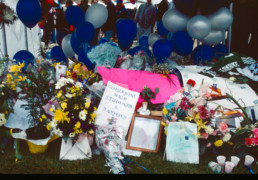
I don’t have answers. In the matter of gun control, I only have opinions. Something has to happen to stop these killings. Voicing my opinion, even on my own blog, is mostly meaningless, and will not save lives. So I will leave my opinion out and just share my photos.
And I share my condolences with the people of Parkland, Florida.
